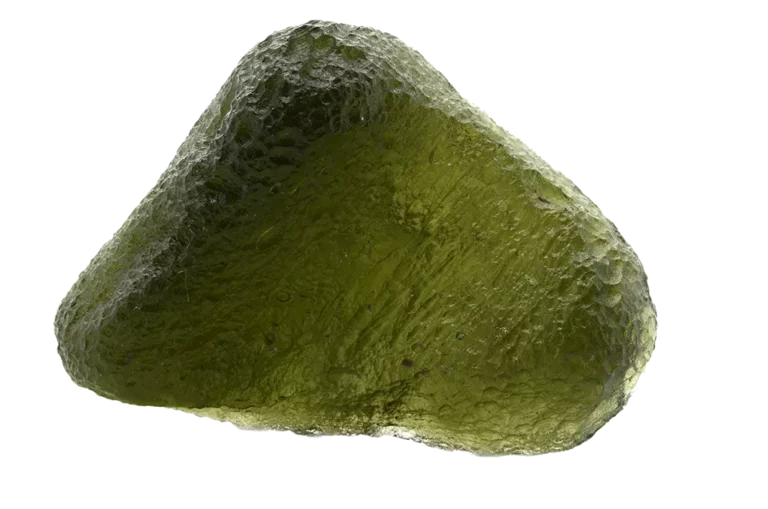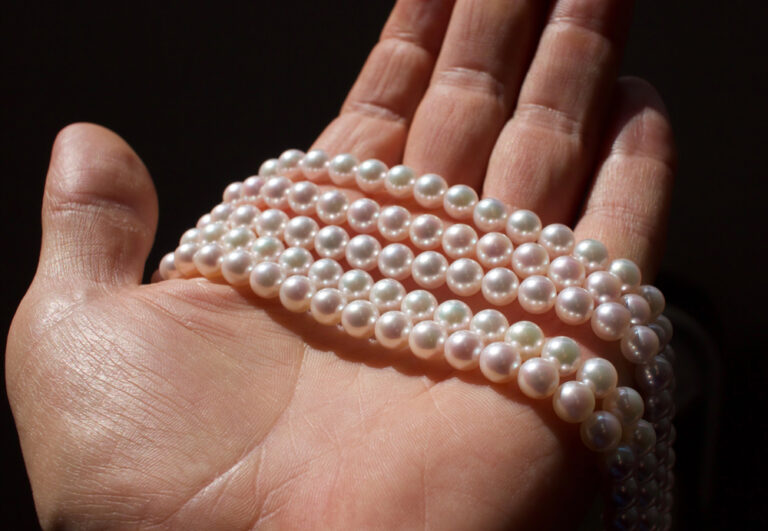Understanding the Intricacies of Gemstone Color Grading
The fascinating world of gemstones is filled with a spectrum of colors, each unique and captivating in its own way. The value of gemstones reaches far beyond their aesthetic appeal, with color playing a significant role in determining their worth. This is where the concept of gemstone color grading comes into play.
In This Article
Historical Overview of Gemstone Color Grading
Gemstone color grading is not a new concept. Ancient civilizations had their own rudimentary systems of grading gemstone color, often based on comparison to familiar items such as plants or animals.
Over the centuries, these systems have evolved dramatically. The advent of the 20th century brought about the development of more standardized and scientific methods for grading gemstone color. Initially, color was often evaluated using comparison stones or color charts. However, this technique had limitations due to the subjectivity involved in color perception.
To overcome these limitations, organizations like the Gemological Institute of America (GIA) introduced more precise and consistent color grading systems. These systems allow gemologists to determine color using objective measures, reducing the subjectivity and creating a universally accepted standard for gemstone color grading.
Importance of Color Grading in Determining Gemstone Value

In a nutshell, the quality of a gemstone is significantly influenced by its color. Color grading allows us to categorize gemstones accurately and consistently, supporting the determination of their value. This explains why two gemstones can be of the same weight and cut, yet have significantly different values.
A high-grade color not only increases the gemstone’s aesthetic appeal but also commands higher prices in the market. For instance, a ruby with a vivid, medium-dark red color – often described as pigeon’s blood red – is considered top quality and can command record prices.
Similarly, sapphires are more valuable if they possess an intense, pure blue color, without any modifying hues of green or violet. On the other hand, emeralds are most sought-after when they display a rich, vivid green hue, with no overtones of yellow or blue.
Thus, understanding gemstone color grading becomes essential for anyone involved in buying, selling, or appraising gemstones. It allows one to appreciate the inherent value of a gemstone and make informed decisions. In the following sections, we delve deeper into the intricacies of the GIA colored gem grading code, the factors affecting gemstone color and its impact on grading, and the role of color grading in gemstone identification and authentication.
GIA Colored Gem Grading Code
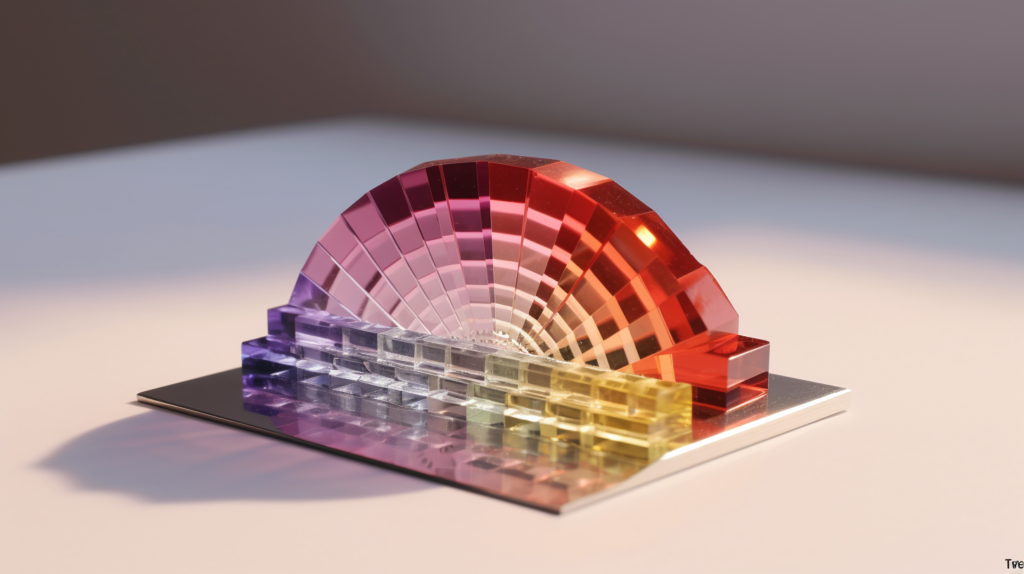
Gemstone color grading is a meticulous process that requires precision and a deep understanding of gemstones. A key player in promoting a standardized color grading system is the Gemological Institute of America (GIA). Their system, based on color’s three dimensions – hue, tone, and saturation – is widely accepted and used within the gemstone industry.
Role of Gemological Institute of America (GIA) in Gemstone Color Grading
Founded in 1931, the GIA is a global leader in gemstone and jewelry education, research, and grading. Their color grading system developed for colored gemstones is an industry benchmark for determining gem color quality.
The GIA color grading system is a standardized method that provides a comprehensible and consistent way of labeling and communicating a gemstone’s color. By offering an objective evaluation of hue, tone, and saturation, it significantly reduces subjectivity and inconsistency in color descriptions.
Decoding the GIA Colored Gem Grading Code
The GIA colored gem grading code is a detailed system that breaks down the color of a gemstone into three separate components: hue, tone, and saturation.
Understanding the Hue, Tone, and Saturation in the GIA System
Hue: GIA defines hue as the basic impression of color that we notice immediately. In gemstones, the hue is commonly referred to within 31 specific colors, ranging from red, orange, yellow, green, blue, violet to purple.
Tone: Tone represents the darkness or lightness of a color. It is rated on a scale from 0 (colorless or white) to 10 (black or a hue so dark it’s almost indistinguishable).
Saturation: Saturation, or color purity, is a measure of the intensity or vividness of a hue. It ranges from 1 (grayish or brownish) to 6 (vivid).
The GIA’s Gemstone Hue Abbreviations
The GIA uses abbreviations for the 31 different hues, such as R for red, O for orange, Y for yellow, G for green, B for blue, V for violet, and P for purple. These abbreviations are combined in various ways to describe the colors of gemstones accurately.
Gemstone Tone Values in the GIA System
Tone values in the GIA system range from 0 to 10, with 0 being colorless or white, and 10 being black or a hue so dark it’s almost indistinguishable. Most gemstones fall in the middle of the scale, between 2 (very light) and 8 (very dark).
Gemstone Saturation Values under the GIA Grading Code
The GIA system grades gemstone saturation on a scale of 1 to 6. A saturation grade of 1 represents a gemstone with grayish or brownish coloration, while a score of 6 indicates a gemstone with a vivid, pure hue.
The GIA colored gem grading code offers a comprehensive and systematic way to describe and evaluate a gemstone’s color. This system’s broad acceptance and usage have significantly contributed to consistency and credibility in the gemstone industry.
Differences in Gemstone Color Grading Systems
While the Gemological Institute of America’s (GIA) color grading system is widely recognized and adopted, it’s not the only standard used in the industry. Other gemological institutes such as the American Gemological Laboratories (AGL) also have their grading systems, and there are noticeable differences between them.
Comparison of the GIA and AGL Color Grading Systems
The GIA’s color grading system is built around the three primary aspects of color: hue, tone, and saturation. It provides a grading code based on these parameters, which helps to describe a particular gemstone’s color accurately.
On the other hand, the AGL color grading system introduced a fourth aspect called ‘Brightness.’ Brightness refers to the lightness or darkness without considering the color’s strength. Thus, the AGL system measures hue, tone, saturation, and brightness to describe a gemstone color’s nuances.
While both systems strive for objectivity and accuracy, the inclusion of brightness in the AGL system adds a layer that allows gemologists to account for additional visual effects that might result from unique gem properties such as double refraction or dispersion.
Other Notable Gemstone Color Grading Systems
Aside from GIA and AGL, there are other notable color grading systems in the gemstone industry. For example, the Hanneman-Hodgkinson color grading system, which uses a set of comparison stones to determine the color grade, is straightforward and user-friendly compared to the GIA and AGL systems, although it lacks their universal applicability.
Meanwhile, the Scandinavian Color Scale, popular in Europe, grades colored gemstones based on hue, tone, saturation, and size. This system specifically considers the effect of a gemstone’s size on its apparent color, which is something other grading systems do not account for.
Each color grading system has its strengths and weaknesses, but they all play an essential role in the industry. They provide a standardized language to communicate about color, helping to ensure fairness and transparency in the valuation and sale of gemstones.
Factors Affecting Gemstone Color and Its Impact on Grading
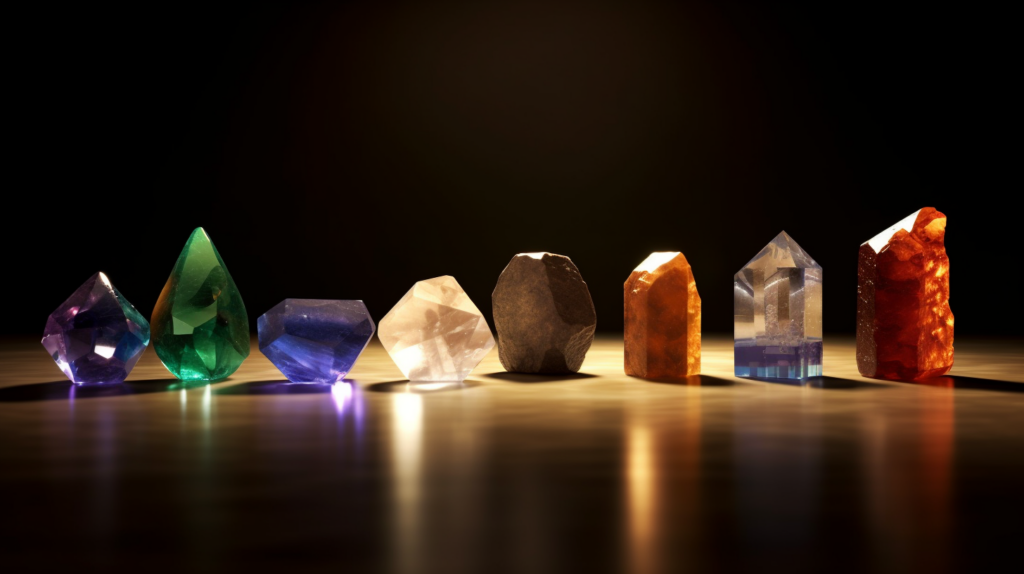
The captivating colors of gemstones are a result of various factors, including chemical composition and structural features. These factors not only determine the gem’s color but also greatly influence the color grade, which is crucial in assessing the gemstone’s value.
Role of Inclusions and Impurities on Gemstone Color
Inclusions and impurities in a gemstone can significantly influence its color. For instance, traces of chromium and vanadium lend emeralds their rich green hue, while different quantities of iron and titanium can give sapphires hues ranging from blue to yellow.
Similarly, the presence of minute inclusions can scatter light within a gem, causing a phenomenon known as adularescence or the moonstone effect, which gives the gem a bluish-white sheen.
These inclusions and impurities can potentially enhance or reduce the color grade of a gemstone, affecting its overall value.
Effects of Light Sources and Viewing Conditions on Color Perception
The type of light source and viewing conditions can drastically alter the perception of a gemstone’s color. Different light sources, such as incandescent, fluorescent, or daylight, can emphasize or diminish certain colors in a gemstone.
For instance, rubies tend to appear more vibrant under incandescent light, which emphasizes red hues, while emeralds look more vivid under daylight, which has a balanced spectrum.
The angle of observation can also affect color perception due to a phenomenon known as pleochroism, where a gemstone appears to change color when viewed from different angles.
Grading systems consider these factors by standardizing lighting and viewing conditions to ensure consistent grading results.
The Phenomenon of Color Change in Gemstones and Its Grading Implications
Some gemstones like alexandrite or color-change sapphires can display different colors under different lighting conditions – a phenomenon termed color change. In the grading process, both colors and the strength of the color change are evaluated, often enhancing the gemstone’s value if the color change is strong and the colors are attractive.
Understanding these factors is crucial for accurate color grading, which in turn helps in determining a fair and objective value for the gemstone.
Gemstone Identification and Authentication through Color Grading
Color grading plays an integral role not only in assessing a gemstone’s value but also in identifying and authenticating gemstones. Color can be a distinctive feature that aids in differentiating between similar-looking gemstones or detecting fraudulent imitations.
Misidentification of Gemstones like Topaz and Citrine
One common example of misidentification is between topaz and citrine. Both gemstones have a similar hue range, making them easily mistaken for one another. However, through precise color grading and analysis of tone and saturation, these two gemstones can be accurately identified – topaz generally has a higher saturation level compared to citrine.
Role of Gemstone Color Grading in Gemstone Identification and Authentication
The color grading process can help identify whether a gemstone is natural, treated, or synthetic. For instance, natural rubies have subtle color variations and inclusions that synthetic rubies often lack. Similarly, heat-treated sapphires may exhibit color zoning patterns that are usually absent in their untreated counterparts.
Moreover, certain gems have unique color characteristics that can serve as identifying markers. The Paraíba tourmaline, for instance, is renowned for its intense blue-green hue, a result of the trace element copper. This unique color can help gemologists distinguish Paraíba tourmalines from other tourmalines.
Therefore, color grading is a powerful tool in the gemstone industry, assisting in gemstone identification and authentication. It ensures that buyers get genuine, high-quality gemstones, thereby maintaining trust and integrity in gemstone transactions.
Evolution of Gemstone Color Grading Techniques
Over the centuries, gemstone color grading has evolved from rudimentary comparison methods to highly sophisticated grading systems. This evolution has significantly improved the accuracy and consistency of gemstone color assessment.
Traditional vs. Modern Color Grading Techniques
Historically, gemstone color was evaluated through simple comparison methods. A gemstone’s color was compared with a familiar object or a known gemstone, and a value was then assigned based on this comparison. However, these methods were highly subjective and often resulted in inconsistencies.
Modern color grading techniques are more systematic and standardized, reducing subjectivity and improving consistency. The GIA’s color grading system, for instance, involves evaluating gemstones under controlled lighting and viewing conditions and grading them based on their hue, tone, and saturation.
Technological Advancements in Color Grading
Technological advancements have further revolutionized color grading. Today, color grading instruments like colorimeters and spectrophotometers can measure color with high precision, making color grading more objective and repeatable.
Computer imaging and machine learning technology have also been utilized for color grading. These technologies allow for the capture and analysis of high-resolution images of gemstones to identify subtle color differences that might be hard to perceive with the naked eye.
Moreover, technologies like Artificial Intelligence (AI) are being explored in the gemstone grading field. AI can potentially analyze vast amounts of data to identify patterns and trends, making color grading even more accurate and efficient.
The evolution of gemstone color grading techniques has undoubtedly enhanced the industry’s ability to evaluate gemstone color accurately. The future of gemstone color grading looks promising, with continuous advancements in technology paving the way for even more precise and reliable grading methods.
Famous Gemstones and Their Color Grading Stories
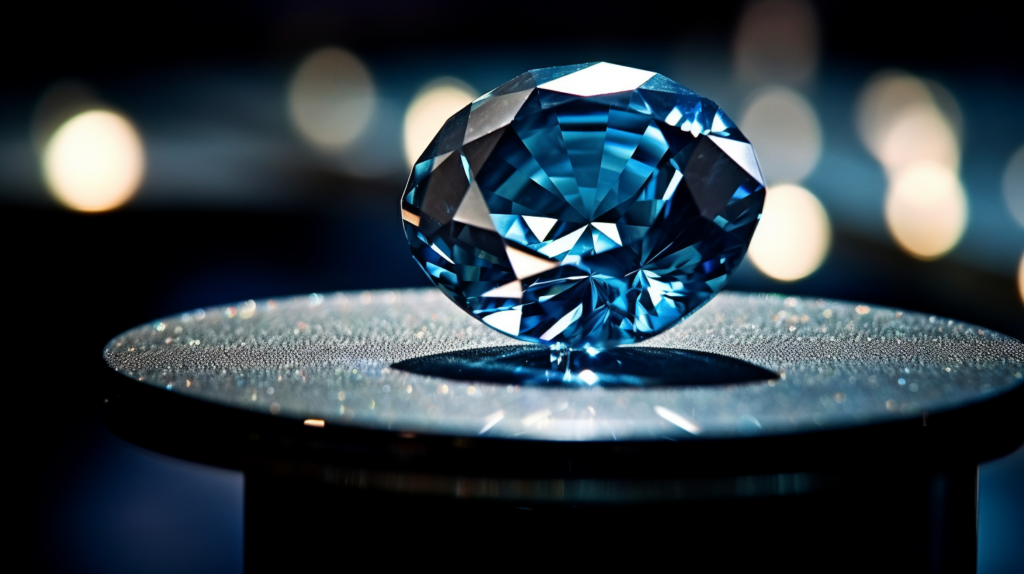
Gemstone color grading has an undeniable impact on the value and allure of gemstones. This is particularly evident when one looks at famous gemstones and their color grading stories, which often involve incredibly rare hues and exceptional saturation levels.
Famous Sapphires and Their Grading Stories
Consider the Star of India, one of the largest and most famous sapphires globally. This gemstone showcases an exceptional shade of blue, sitting in the mid-range of the tone scale while displaying a strong saturation. The uniform hue, coupled with the striking asterism pattern, sets it apart and adds to its value.
Another compelling example is the Padparadscha sapphire, renowned for its unique salmon color—a blend of orange and pink hues. This rare hue, coupled with a medium tone and moderate to strong saturation, commands premium prices in the market.
Exceptional Specimens of Rubies, Sapphires, and Paraíba Tourmalines with Vivid Saturation Levels
The Hope Ruby, weighing an impressive 32.08 carats, exhibits an intense crimson hue, which falls under the ‘pigeon blood’ category—a color grade highly coveted in rubies.
The Blue Belle of Asia, a 392.52-carat sapphire, is another testament to the significance of color grading. It features a rich, cornflower blue color with a medium-dark tone and vivid saturation, making it one of the world’s most expensive sapphires.
Lastly, the Ethereal Carolina Divine Paraíba, the world’s largest Paraíba tourmaline, displays an electrifying neon blue color—a result of copper traces. This unique hue, along with a medium-dark tone and strong saturation, elevates its value significantly.
These examples underline the intriguing stories behind famous gemstones that their color grades often narrate, underscoring how color grading plays a pivotal role in their valuation and fame.
Practical Implications of Color Grading
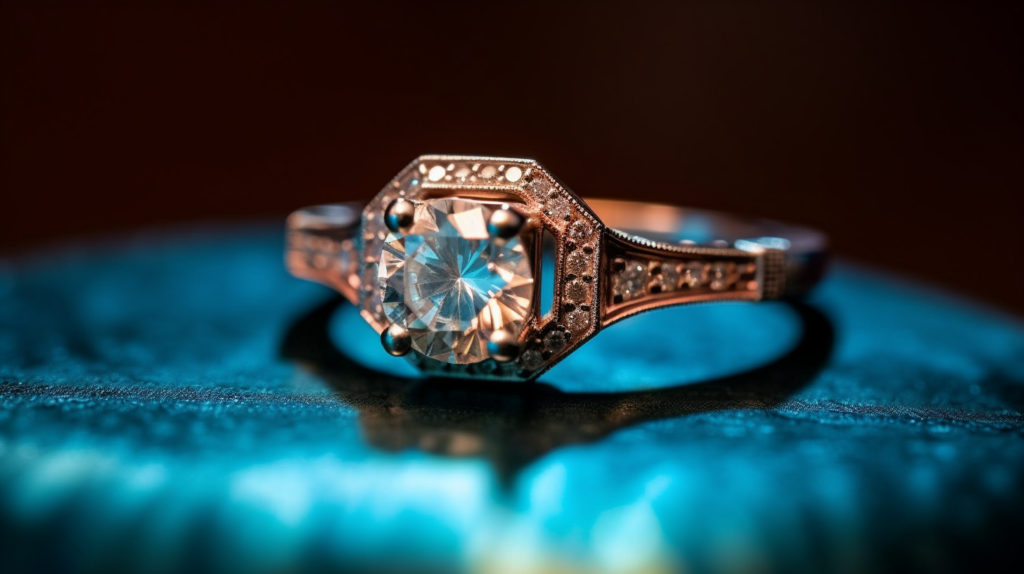
Understanding gemstone color grading doesn’t just pertain to gemologists or jewelers. It can benefit anyone planning to buy or sell gemstones. Here’s a look at how the practical implications of color grading can influence various aspects of the gemstone market.
Interpreting a Gemstone Color Grading Report
A color grading report provides an objective analysis of a gemstone’s color, detailing its hue, tone, and saturation. It may also include information about the stone’s size, weight, shape, and any treatments it may have undergone.
By understanding how to interpret a color grading report, one can make more informed decisions about a gemstone’s value. For instance, a ruby with a ‘pigeon blood’ color grade is considered highly valuable and is a testament to the gem’s top quality.
Morganite Color Grading and Its Impact on Value
Morganite, a variety of beryl, is known for its range of pink to peach hues. Its value increases significantly with deeper, more saturated color. A morganite gemstone with a ‘medium dark, vivid pink’ color grade would typically be more valuable than one with a ‘light, faint pink’ color grade.
Affordable Engagement Ring Stones and Their Color Grades
For those seeking affordable alternatives to traditional engagement ring stones like diamonds, understanding color grading can help identify high-quality alternatives. For instance, an aquamarine’s value increases with the depth of its blue color, while a garnet’s worth is influenced by the saturation of its red hue. Understanding these color grades can help buyers assess the quality and value of these gemstones effectively.
In conclusion, the practical implications of gemstone color grading are widespread, influencing everything from gemstone valuation to purchase decisions. It serves as a crucial tool for anyone seeking to understand and appreciate the wonderful world of gemstones.
Summary Of Discussion: The Art and Science of Gemstone Color Grading
Gemstone color grading is a fascinating blend of art and science. It involves the technical understanding of color attributes—hue, tone, and saturation, and the artistic ability to perceive and appreciate the nuances of color. As we delve deeper into the world of gemstones, we realize that the beauty of these natural marvels is not just skin deep. Underneath the dazzling brilliance lies a spectrum of colors, each with its own story and value, determined by meticulous color grading processes.
From the historical overview to the modern standardized grading systems, we’ve journeyed through the evolution and practical implications of gemstone color grading. We’ve learned about the GIA, AGL, and other color grading systems, and understood how factors such as inclusions, light sources, and viewing conditions influence gemstone color and its grading. We’ve also discovered the role of color grading in gemstone identification and authentication and heard fascinating color grading stories of some famous gemstones.
The importance of understanding gemstone color grading cannot be overstated—whether you’re a gemologist, jeweler, or a prospective buyer. It allows us to truly appreciate the value of a gemstone, make informed decisions, and marvel at the wondrous array of colors that nature has to offer.
As we look towards the future, advancements in technology will undoubtedly bring about further improvements in gemstone color grading. And as we embrace these developments, we continue our quest to unlock and understand the full spectrum of colors in the captivating world of gemstones.
Frequently Asked Questions (FAQs)
What is the role of the Gemological Institute of America (GIA) in gemstone color grading?
The GIA plays a crucial role in gemstone color grading by having developed a standardized grading code that helps to quantify the hue, tone, and saturation of a gemstone. This code is vital for determining the quality and value of the stone.
What are the key differences between the GIA and AGL color grading systems?
Both the GIA and AGL grading systems aim to accurately determine the color of gemstones. However, there are notable differences in their grading scales, methodologies, and the specific terms they use to denote hue, tone, and saturation. It’s essential for gemstone buyers and collectors to understand these differences to make an informed purchase decision.
How do inclusions and impurities impact the color of a gemstone?
Inclusions and impurities can significantly affect a gemstone’s color. Certain impurities or elements within the crystal structure of a gemstone can alter its color. For instance, traces of chromium can give a ruby its red color. It’s important to note that these inclusions and impurities are considered during color grading and can affect a gemstone’s overall value.
How does gemstone color grading aid in gemstone identification and authentication?
Gemstone color grading serves as a useful tool in identifying and authenticating gemstones. For example, misidentifications can occur between gemstones such as topaz and citrine, which have similar hues. However, a detailed color grading report can distinguish them based on their unique color properties.
What are the practical implications of color grading on a gemstone’s value, such as Morganite?
Color grading can significantly impact a gemstone’s value. For instance, Morganite with a strong, pure pink color is usually more valuable than a gemstone with a weaker or more pale hue. Therefore, understanding a gemstone’s color grading report can help buyers discern its value better.



